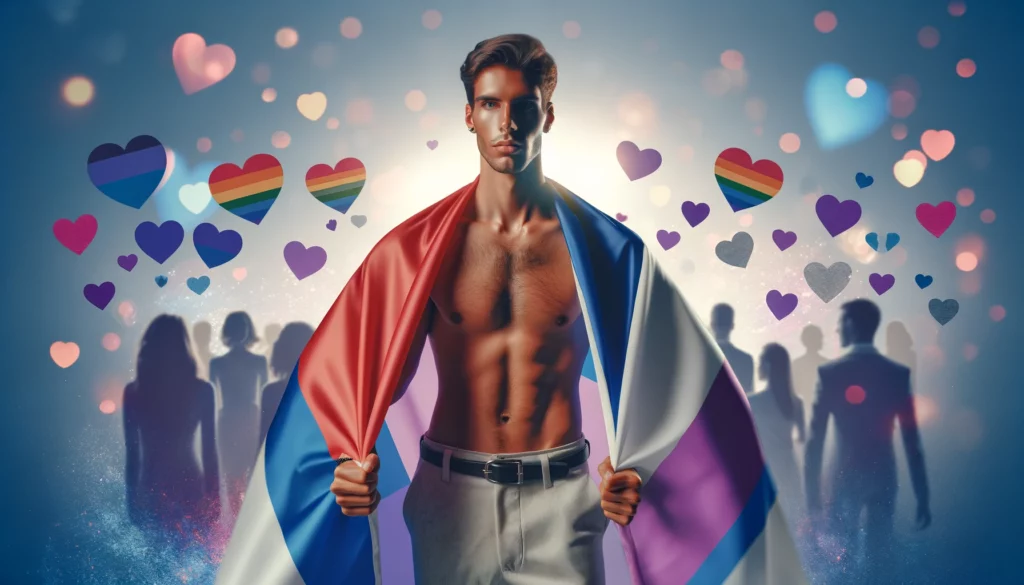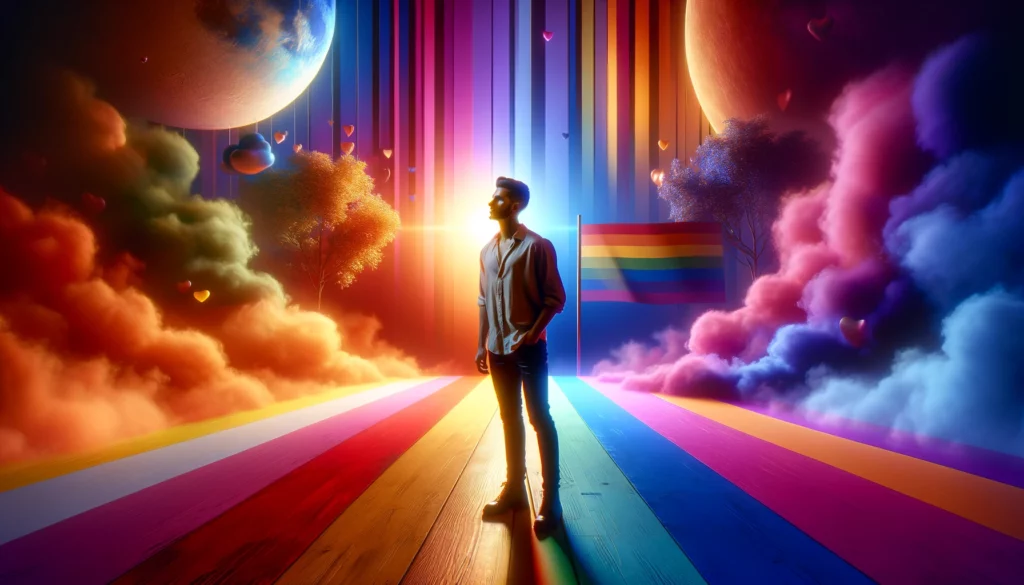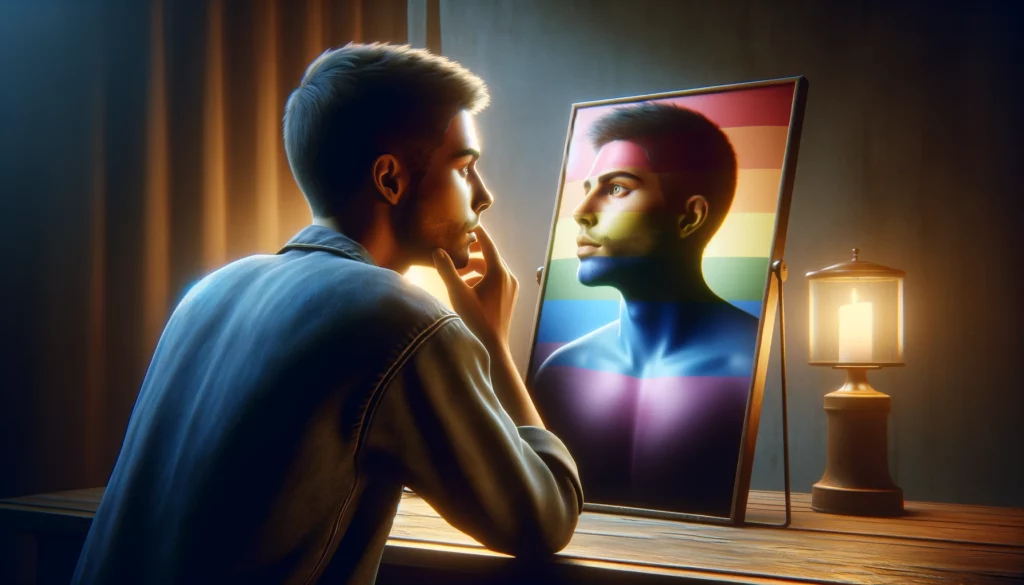Table of Contents

Is Bisexuality a Real Sexual Orientation? Introduction
What is bisexuality?
Bisexuality refers to someone who is emotionally, romantically and/or sexually attracted to more than one gender. Bisexual people may be attracted to men and women, or they may be attracted to people regardless of gender. The “bi” prefix means “two,” but bisexuality does not necessarily imply attraction to only two genders. Some define bisexuality more broadly and consider it an umbrella term encompassing various sexual identities, including pansexuality. Bisexuality exists on a spectrum, and bisexual experiences can vary significantly from person to person.
Is bisexuality the same as being gay/lesbian?
No, bisexuality is a distinct sexual orientation from being gay or lesbian. Gay men and lesbian women are exclusively attracted to the same gender, while bisexuals can be attracted to multiple genders. Some people consider bisexuality to be more fluid and complex than heterosexuality or homosexuality. Bisexual people have their own identity, experiences and issues that are unique.
Do bisexual people exist?
Absolutely. Bisexuality has been documented in human society for thousands of years. Many cultures have words and concepts related to bisexuality that pre-date modern terminology. There have been notable bisexual figures like Alexander the Great, Lord Byron and Frida Kahlo throughout history. Multiple scientific studies have validated the existence of bisexuality. Research indicates that people who identify as bisexual show physical and emotional arousal towards both men and women. Brain scan studies also reveal distinct responses in bisexual men and women compared to gay men and lesbian women.
Isn’t bisexuality just confusion or experimentation?
No. While some people do go through transitional periods of bisexuality on their way to realising their gay/lesbian identity, that is not the case for many bisexuals. Numerous studies have shown bisexuality to be a stable, enduring sexual orientation for a significant portion of people. Research indicates most bisexual people maintain their attraction to multiple genders over time. For true bisexuals, their orientation is not just temporary curiosity or experimentation.
Do bisexual people need to have equal attraction to men and women?
Not at all. Bisexual people can be predominantly attracted to one gender while still retaining some attraction to other genders. Some bisexuals experience their attraction shifting over time. Others feel it fairly consistently across genders. There are no rules dictating that bisexuals must have “equal” attraction. The degree can vary, and what matters most is that bisexual people have the capacity for attraction to more than one gender.
Can you be bisexual if you’ve never had a sexual experience?
Yes, absolutely. Sexual orientation is about attraction and desire, not actions. A virgin can undoubtedly identify as bisexual based on their feelings and emotions. While sexual experiences can provide more clarity, a person does not have to “prove” their orientation through physical acts. Some bisexual people choose abstinence for religious or personal reasons. Some may not have had the opportunity for a same-sex encounter. None of this invalidates their bisexual identity if they know they have the capacity for desire.
Do all bisexual people feel the need to be with both genders to be satisfied?
No. This is a common misconception. While some bisexual people prefer to have relationships with both men and women either simultaneously or at separate times, this is not true for all bisexuals. Many bisexuals feel perfectly satisfied in monogamous, long-term relationships with one gender. For bisexuals in these relationships, they acknowledge their capacity to be attracted to multiple genders, even if they choose not to act on it.
Is the bisexual community welcoming of transgender and non-binary people?
Yes. Bisexuality has historically been an inclusive identity encompassing attraction to all gender identities. The bisexual community celebrates and affirms non-binary genders as part of the spectrum that bisexuals can be drawn to. The term pansexuality also acknowledges attractions that go beyond the gender binary. There is some overlap between the bisexual community and pansexual identity when it comes to recognising gender diversity.
Do bisexual people face discrimination and stigma?
Unfortunately, yes. Biphobia is distressingly common in both straight and gay/lesbian communities. Harmful attitudes include beliefs that bisexuality is “just a phase,” that bisexuals are untrustworthy or incapable of monogamy, and that bisexuality is not a valid identity. Bisexual people may feel they don’t fully belong in either heterosexual or homosexual communities. Some experience rejection from potential partners. Studies show bisexuals have higher rates of mental health issues and distress compared to gay and lesbian peers, resulting from marginalisation on multiple fronts.
Understanding Bisexuality
Defining Bisexuality: Bisexuality is a sexual orientation characterised by the potential for emotional, romantic, or sexual attraction to people of more than one gender. This attraction does not have to be equally split or consistent over time.
Bisexuality vs. Other Orientations: Unlike monosexuality (exclusive attraction to one gender), bisexuality encompasses a broader spectrum. It differs from pansexuality, which is an attraction regardless of gender, focusing more on the individual than their gender identity.
The Science Behind Bisexuality
Biological Evidence: Studies have shown that bisexual individuals exhibit unique patterns in brain activity, hormone levels, and genetic markers, distinguishing them from both heterosexual and homosexual individuals.
Psychological Perspectives: Psychologists recognise bisexuality as a legitimate orientation. The American Psychological Association (APA) supports this, stating that bisexuality is a normal and positive variation of human sexuality.
Debunking Myths About Male Bisexuality
Myth 1: Bisexuality is a Phase: A common misconception is that bisexuality, especially in men, is a transitional phase towards homosexuality. However, research and personal accounts affirm that bisexuality is a stable and enduring identity for many.
Myth 2: Bisexual Men are Promiscuous: Stereotypes suggest that bisexual men are more likely to be promiscuous. This is a harmful generalisation that overlooks the diverse experiences and values within the bisexual community.
Myth 3: Bisexual Men are Confused: Another myth is that bisexual men are unsure of their sexual orientation. In reality, bisexual individuals often go through a process of self-discovery and understanding, just like anyone else.
Personal Experiences of Bisexual Men
Navigating Identity: Many bisexual men share stories of navigating their identity in a society that often demands clear-cut labels. These narratives highlight the journey towards self-acceptance and the challenges faced in a predominantly monosexual culture.
Relationship Dynamics: Bisexual men often face unique challenges in relationships, including stereotypes and misconceptions from both heterosexual and homosexual partners. Their experiences shed light on the need for greater relationship understanding and acceptance.
Bisexuality in Culture and Media
Representation Matters: The portrayal of bisexual men in media and culture has a significant impact on public perception. While there has been progress, there is still a need for more diverse and accurate representations of bisexuality.
Influencing Public Perception: How bisexuality is depicted in the media can either reinforce stereotypes or help break them down. Positive and nuanced portrayals can lead to a broader understanding and acceptance of bisexuality.
The Role of Community and Support

Finding Community: For many bisexual men, finding a community of like-minded individuals can be a pivotal part of their journey. Support groups, both online and offline, provide a space for sharing experiences and offering mutual support.
Challenges within the LGBTQ+ Community: Bisexual men sometimes face exclusion or scepticism within the LGBTQ+ community. Addressing these issues is crucial for fostering inclusivity and solidarity among all sexual orientations.
Scientific Proof of Bisexual Orientation
A 2020 study published in Proceedings of the National Academy of Sciences analysed genital arousal patterns of men who identified as bisexual. The study found that these men tended to show arousal to both male and female sexual stimuli, confirming bisexual arousal patterns.
Earlier studies that found contradictory evidence had methodological flaws, such as not including bisexual participants.
So modern research with improved methods provides compelling proof that bisexual orientation exists among men. The science validates men who identify as bisexual.
Prevalence of Bisexuality
Various surveys have attempted to estimate the percentage of bisexual individuals. But these estimates are likely lower than the actual numbers.
A 2016 Centers for Disease Control and Prevention survey found that 5.5% of women and 2% of men identified as bisexual.
However, bisexual individuals often face stigma and misunderstanding about their orientation from both straight and gay/lesbian individuals. As a result, many choose not to disclose their bisexuality.
A 2013 Pew survey found that only 28% of bisexual people are open about their orientation.
So, while percentages from surveys provide some insight, they likely underestimate the number of people who are bisexual or have an attraction to multiple genders.
Bisexual Erasure and Binegativity
Unfortunately, bisexual individuals commonly deal with denial and dismissal of their sexual identity, known as bisexual erasure. Both straight and gay/lesbian individuals contribute to this erasure.
Bisexual people also face prejudice called binegativity. Studies show many people view bisexuality as inferior, indecisive, and non-existent.
As a result, bisexual individuals deal with minority stress and mental health issues at higher rates.
So bisexual erasure and binegativity contribute to discrimination against bisexual individuals.
Impacts on Relationships
The misunderstanding bisexual people face can also negatively impact their relationships.
Bisexual individuals report their partners often deny the legitimacy of their bisexual attractions. Some partners insist that bisexual people “pick a side”.
Myths that bisexuals are incapable of monogamy may also undermine relationship stability.
However, these myths have no factual basis. Bisexual people have varied relationship styles, just like straight and gay people.
How can we support and celebrate the bisexual community?
There are many ways allies can show their support:
- Believe and validate bisexual people when they share their identity. Do not question or dismiss their experiences.
- Challenge biphobia and hurtful stereotypes where you encounter them. Call out jokes, slang and derogatory terms about bisexuality.
- Advocate for inclusion of bisexual issues and history in LGBTQ+ spaces, curriculums and campaigns.
- Help create welcoming communities where bisexual people feel accepted, not invisible. Make sure language and topics are inclusive.
- Get educated about the diversity within bisexuality and the bi community’s unique needs. Listen to bisexual people’s stories.
- Celebrate bisexual milestones like Bi Visibility Day (September 23) and recognise bisexual history makers.
- Support bisexual public figures, artists and media creators. Demand diverse representation in the media.
- Continue exploring your own biases and striving to be an ally. Growth is a lifelong process.
Validating Bisexual Orientation
The scientific evidence clearly shows that bisexual orientation is real. And the number of people who are bisexual is likely higher than most estimates due to stigma.
Bisexual individuals unfortunately deal with myths that their sexual identity is invalid, indecisive, or non-existent.
But these myths feed into prejudice and discrimination against bisexual people. They undermine mental health and relationships.
That’s why it’s important to validate bisexuality as a real sexual orientation. Recognising the science and people’s self-identification is key to fostering acceptance.
What This Means For You
If you identify as bisexual, know that your sexual orientation is genuine and valid, despite what myths may claim. Don’t let others erase or dismiss your identity. And seek out communities that provide positive support and understanding.
If you have a bisexual partner, recognise their capacity for attraction to multiple genders. Don’t deny or undermine their identity. Instead, keep communication open about each other’s needs.
And regardless of your sexual orientation, you can foster acceptance. Believe people who say they’re bisexual. Check your own potential biases or stereotypes about bisexuality. And speak up against bisexual discrimination when you witness it.
Recognising and validating bisexual orientation is crucial for better understanding the diversity of human sexuality. It also promotes the health and well-being of the many people who are bisexual.
Explore More on BisexualMen.uk
For those who wish to delve deeper into the world of bisexual and bicurious men in the UK, BisexualMen.uk offers a comprehensive and welcoming online portal. This platform provides more than just information; it’s a gateway to vibrant communities, unique experiences, and safe spaces for exploration and connection. Discover a variety of established businesses and events tailored for bisexual men, from luxurious saunas to intimate cinema clubs. Embrace your journey of self-discovery and community connection by visiting BisexualMen.uk.
In conclusion:
Bisexuality is a natural, legitimate sexual orientation. Research confirms its biological basis and prevalence across history. Bisexual people represent a sizable and essential part of the LGBTQ+ community. Yet misconceptions about bisexuality persist, and harmful stereotypes need to be continuously challenged. By learning more about the diversity of bisexual experiences, believing bisexual people’s stories, and embracing bi+ identities, we create a more accepting world for people of all orientations.
FAQ
Can bisexual attraction change over time?
Yes, bisexual attraction can fluctuate over time or remain fairly stable. There’s no “right” way for bisexual attractions to manifest. Bisexuality exists on a spectrum.
Are all bisexual people non-monogamous?
No. Bisexual people have diverse relationship styles. While some prefer non-monogamy, many have happy, healthy, monogamous relationships.
Can someone identify as bisexual if they haven’t had sex?
Yes. Bisexual identity is about the capacity for attraction, not sexual experience. A bisexual virgin is still bisexual.
Can someone be bisexual if they have a preference for one gender?
Yes. Bisexual people may lean towards different genders at different times in their lives. As long as they have the capacity for multi-gender attraction, they can identify as bisexual.
Is the bisexual community inclusive of transgender and non-binary people?
Yes. The bisexual community affirms attractions across the gender spectrum. Many consider it a broad and inclusive identity.



